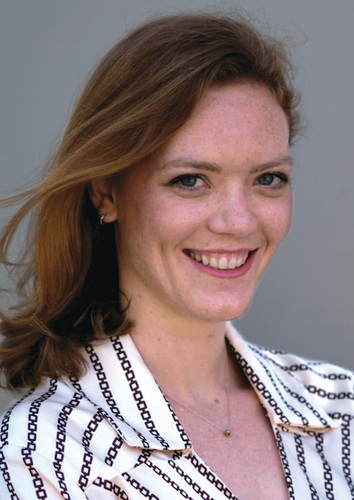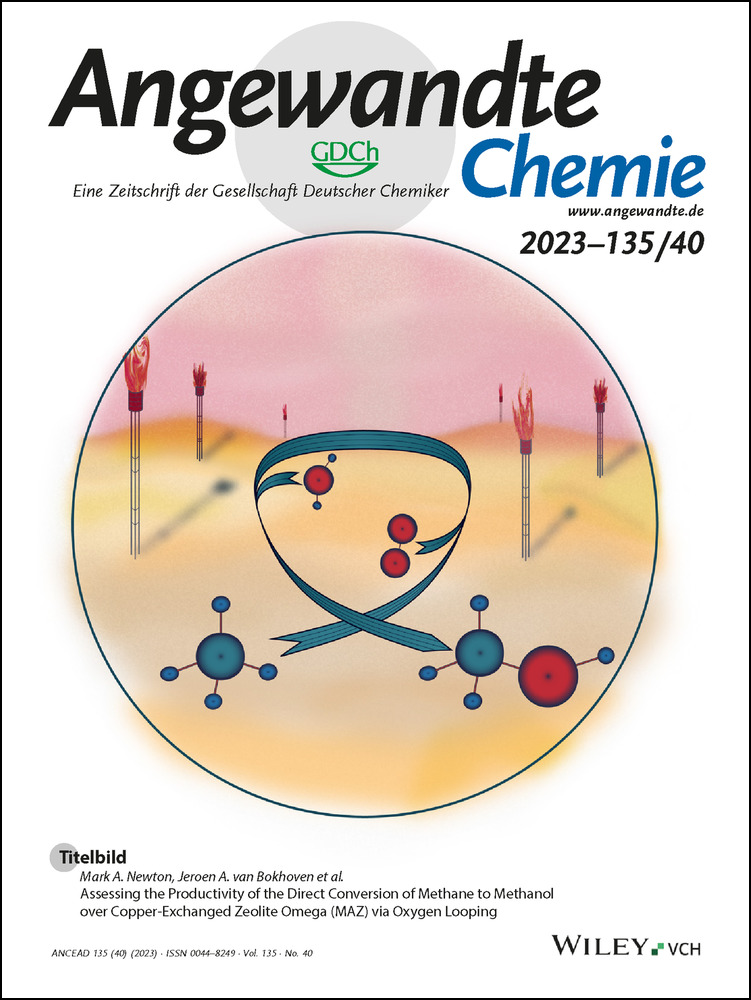Katharina Ehrmann
Graphical Abstract
“The most important future applications of my research are functional parts for a multitude of applications in recycling, medicine, electronics and more, and some of which I probably don't even know about yet … Modern science needs to focus on … See, I think this is not how science works. We never know for sure where the next big idea, the next solution to a problem, can be found.” Find out more about Katharina Ehrmann in her Introducing … Profile.
Katharina Ehrmann
The author presented on this page has published her first article as a submitting corresponding author in Angewandte Chemie:
“Cooperative Network Formation via Two-Colour Light-Activated λ-Orthogonal Chromophores”: T. N. Eren, F. Feist, K. Ehrmann, C. Barner-Kowollik, Angew. Chem. Int. Ed. 2023, e202307535.
-
Position, Location:
-
Group leader, Technische Universität Wien, (Austria)
Visiting Scientist, Queensland University of Technology, Brisbane (Australia)
-
Homepage:
-
-
ORCID:
-
-
Education:
-
2012–2016 Undergraduate, University of Innsbruck (Austria) including studies at the University of Edinburgh (UK) in 2015
2017–2020 PhD with Prof. Robert Liska, Technische Universität Wien (Austria)
2022–2023 Postdoctoral position with Prof. Christopher Barner-Kowollik, Queensland University of Technology (Australia)
2021, 2023 to present Postdoctoral position with Prof. Robert Liska, Technische Universität Wien (Austria)
-
Research:
-
Polymer chemistry, photochemistry, additive manufacturing
-
Hobbies:
-
Swimming and stand-up paddling in summer, skiing in winter; drawing/painting; playing the piano and flute
The most exciting thing about my research is the diversity of chemical concepts I get to use. Additive manufacturing, and especially light-based additive manufacturing, has been based on similar polymerization techniques and monomers for a long time. I firmly believe that the expansion of the additive manufacturing material portfolio requires the further development of machines and especially rethinking the chemistry behind additive manufacturing.
The biggest challenge facing my generation of scientists is how fast-paced the world and science have become. We must not forget that ideas need time. Time to develop and time to consider their implications.
The greatest scientific advance of the last decade was finding the Higgs boson at the Large Hadron Collider (LHC)—the missing particle to complete the concept of what matter is in its most fundamental form. When I was studying at the University of Edinburgh, one of Peter Higg's former colleagues gave me a spontaneous guided tour of his exhibition on scales. The tour started with a picture of two persons with red helmets at the LHC—him and Peter Higgs searching for the particle! It was impressive to hear this very personal account of such a significant discovery.
Modern science needs to focus on … See, I think this is not how science works. We never know for sure where the next big idea, the next solution to a problem, will be found. Scientists must be able to pursue something they are really passionate about to uncover hidden potential to make the world a better place.
My favorite piece of research is … If I have to pick, I have always been fascinated with supramolecular chemistry, and especially Jean-Marie Lehn's work on dynamic and adaptive chemistry. I really enjoyed his lecture on self-organizing systems via dynamic combinatoric chemistry at the Lindau Nobel Laureate Meetings.
The most important factor in the choice of my current research topic was my fascination with light! For example, I never miss the Light Festival in Vienna, where all boats on the Old Danube are decorated with fairy lights. Scientifically, I am impressed by what you can set in motion with such a mild trigger, especially if you compare it to the reaction conditions that are necessary otherwise.
A key experience in my education was my participation in the Austrian and International Young Physicists’ Tournament. This hands-on tournament is conducted with impressive analogy to the real-world scientific process and conferences and gave me a glimpse at what being a scientist is about: Extracting research questions from everyday life and finding and testing hypotheses as a team is what got me into science.
The most important future applications of my research are functional parts for a multitude of applications in recycling, medicine, electronics and more, and some of which I probably don't even know about yet. I hope to critically contribute to the advancement of 3D printing with my fundamental photopolymerization and material research.
Young professors / group leaders / principal investigators are not prepared for the deep feeling of responsibility to their students. They rely on you in a turbulent time both personally and financially.
The biggest change in my scientific working environment in the past 10 years has been my move from the lab to the office. While I still had the luxury of going to the lab every day at QUT, I am now at my desk fulltime. However, I have to say it is equally rewarding to be involved in so many projects at once and to work with the next generation of scientists.
I advise my students to do two things: 1) Be curious and find where especially unexpected results come from. 2) Say things out loud, no matter what it is about. If something is addressed in the right, mindful way, this can set actions in motion.
I recharge my batteries by swimming. I can either reflect on my life and research, or completely free my mind, in some sort of meditation and drown out everything around with each stroke further and further.
My motto is that science is not personal! We discover the ways in which nature works. Sometimes (okay, often…) an experiment does not work out the way we want and that is okay. There is something to be learned from that. Other times, we find something thrilling. But that still does not mean that it is ours; it is simply a piece of science and we were lucky enough to be part of the discovery.
If I were stranded on a desert island and could have only one book, I would choose On Creativity by David Bohm because no other book has resonated with me as much as David's ideas did. Also, it is a very philosophical read and I could use the quiet of a desert island to digest and reflect on it.
My favorite artist is probably my grandfather. I was fortunate that he taught me some things about painting when I was young and in hindsight they feel like life (and science) lessons: “Look very closely at the line of that tree trunk. It is not straight—nothing is ever straight in nature. Only if you understand that and depict it the way you really see it and not in the way you think you see it, it will look realistic.”
Behind the Science
The idea behind this paper originates from my postdoctoral time at QUT in Christopher's group in Brisbane. Reading his group's paper on sequence-independent APAT/oMBA chromophore orthogonality and connecting these findings with research I was involved in at TU Wien, I wondered about the transformation of fully orthogonal reactions into cooperative reactivity by linking the two chromophores covalently. After in-depth chemical discussions between Christopher and myself, we developed a detailed project plan. First author and postdoctoral fellow Tugce had been working on the APAT-chromophore already at the KIT-node of Christopher's team and was brave enough to implement the concept experimentally. Our critical achievement described in the study is maintaining orthogonality in highly concentrated chromophore-mixtures.





